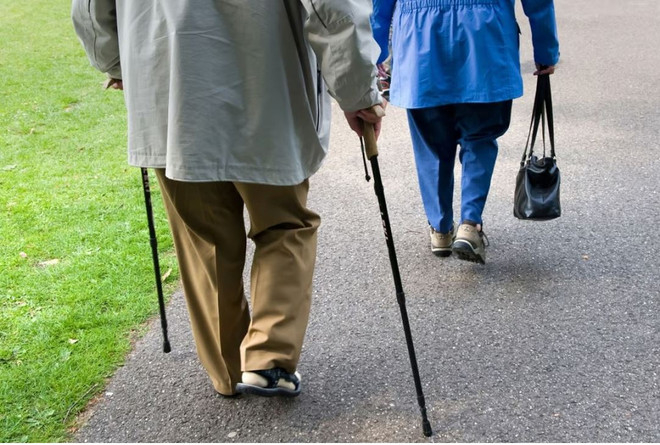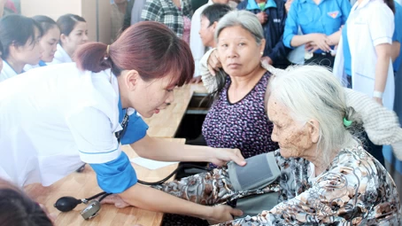Scientists have recently discovered that a person with dementia has obvious changes in body movements as early as 10 years before being diagnosed, but most people do not pay attention to it.
Alzheimer's dementia often begins silently, causing many people to not realize they have it. Or they mistake the signs of forgetfulness for the natural aging process.
A recent study published in the journal "Lancet - Health and Longevity" found that before dementia occurs, walking limbs send out clear signals and these signs can be seen as early as 10 years ago.
Research shows that as people age, their motor functions, such as walking speed, tend to decline. Problems with motor function appear up to 10 years earlier than cognitive decline. Changes in an older person's gait can actually be a sign of dementia, diseases of their joints, muscles, and nervous system.

Delayed gait
This gait is characterized by the foot being unable to lift and dragging along the ground. The foot appears to be pulled by gravity and cannot be lifted easily to walk. This gait is clinically typical of hydrocephalus with normal brain pressure.
This can be the result of the natural aging process of the brain, brain hemorrhage or infection and may be accompanied by memory loss, urinary disorders (such as frequent urination, incontinence or difficulty urinating).
Staggering gait
These people walk like they are drunk, always staggering and losing balance and cannot walk in a straight line. This gait can be suspected of cerebral hemorrhage, cerebral infarction, brain tumor, especially damage to the cerebellum...
Limping
People who limp have one leg that is normal, but the other leg may have a nerve or muscle dysfunction that prevents it from moving together, resulting in a limp.
This condition is more common in sciatica, disc stenosis, lower limb vascular occlusion, osteoarthritis, or unilateral cerebrovascular disease.
Shuffling gait
This walking posture can be a sign of Parkinson's disease as well as some degenerative diseases of the central nervous system, often appearing early in middle-aged and older people. The shuffling gait, where the head, neck, and lower legs are bent forward in a rigid posture. Affected people often take short, quick steps to maintain their center of gravity.
Although Alzheimer's cannot be completely prevented, some measures can reduce the risk of rapid disease progression such as good control of physical diseases, healthy diet, increased brain activity, mental health care, etc.
T. Linh
Source: https://giadinhonline.vn/4-bat-thuong-khi-di-lai-canh-bao-sa-sut-tri-tue-tu-10-nam-truoc-d203587.html




![[Photo] Prime Minister Pham Minh Chinh receives a bipartisan delegation of US House of Representatives](https://vphoto.vietnam.vn/thumb/1200x675/vietnam/resource/IMAGE/2025/5/28/468e61546b664d3f98dc75f6a3c2c880)
![[Photo] Vietnamese and Hungarian leaders attend the opening of the exhibition by photographer Bozoky Dezso](https://vphoto.vietnam.vn/thumb/1200x675/vietnam/resource/IMAGE/2025/5/28/b478be84f13042aebc74e077c4756e4b)
![[Photo] General Secretary To Lam works with the Central Policy and Strategy Committee](https://vphoto.vietnam.vn/thumb/1200x675/vietnam/resource/IMAGE/2025/5/28/7b31a656d8a148d4b7e7ca66463a6894)
![[Photo] 12th grade students say goodbye at the closing ceremony, preparing to embark on a new journey](https://vphoto.vietnam.vn/thumb/1200x675/vietnam/resource/IMAGE/2025/5/28/42ac3d300d214e7b8db4a03feeed3f6a)




















































































Comment (0)